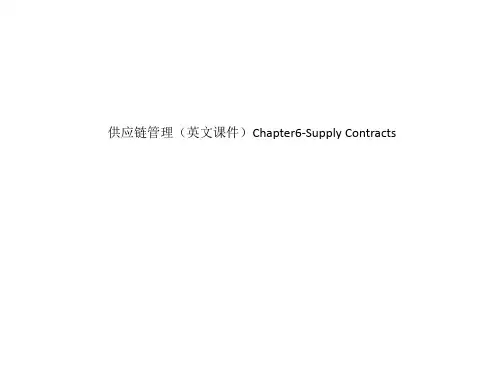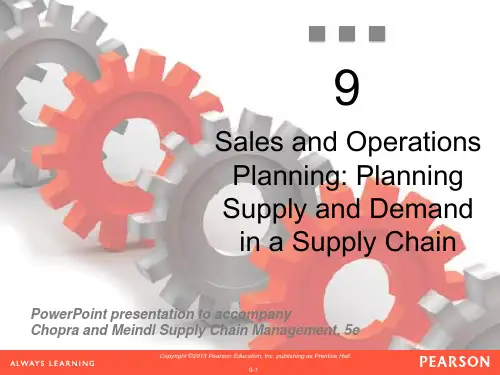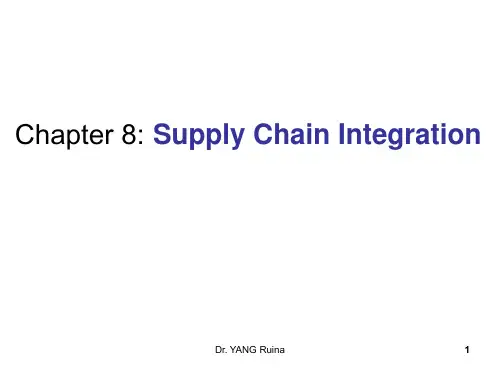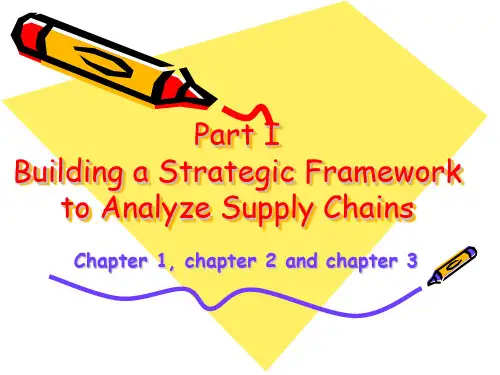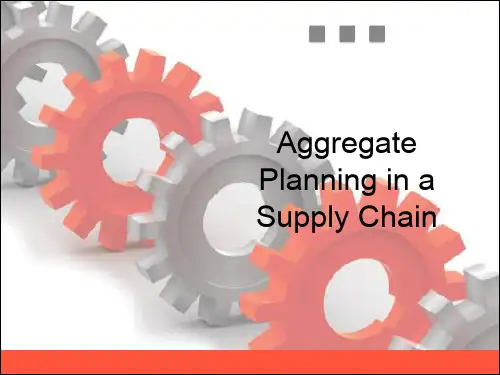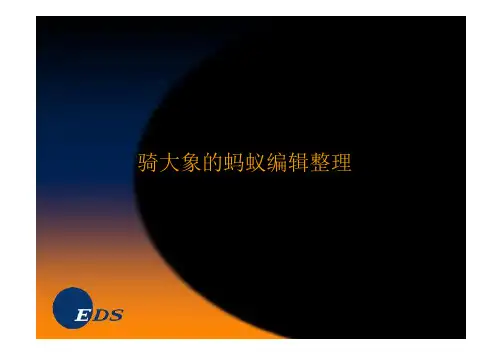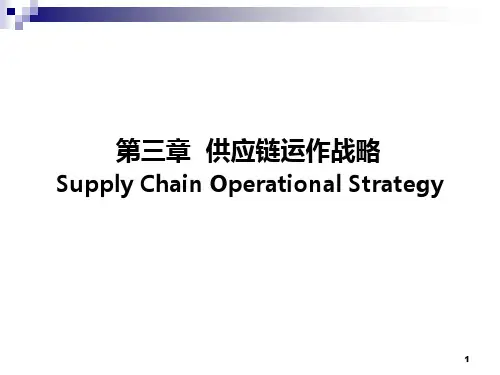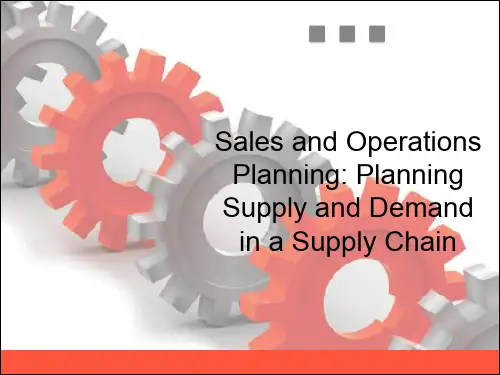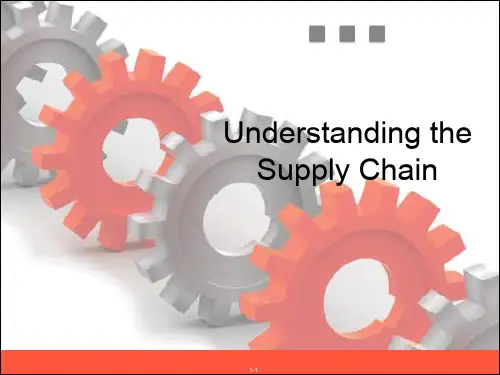- 1、下载文档前请自行甄别文档内容的完整性,平台不提供额外的编辑、内容补充、找答案等附加服务。
- 2、"仅部分预览"的文档,不可在线预览部分如存在完整性等问题,可反馈申请退款(可完整预览的文档不适用该条件!)。
- 3、如文档侵犯您的权益,请联系客服反馈,我们会尽快为您处理(人工客服工作时间:9:00-18:30)。
• Must consider in planning decisions demand
uncertainty, exchange rates, competition over the time horizon
Copyright ©2013 Pearson Education, Inc. publishing as Prentice Hall .
Copyright ©2013 Pearson Education, Inc. publishing as Prentice Hall . 1-2
What is a Supply Chain?
• All stages involved, directly or indirectly, in
• •
fulfilling a customer request Includes manufacturers, suppliers, transporters, warehouses, retailers, and customers Within each company, the supply chain includes all functions involved in fulfilling a customer request (product development, marketing, operations, distribution, finance, customer service)
1
Understanding the Supply Chain
PowerPoint presentation to accompany Chopra and Meindl Supply Chain Management, 5e
Copyright ©2013 Pearson Education, Inc. publishing as Prentice Hall . 1-1
• Supply chain design must support strategic •
objectives Supply chain design decisions are long-term and expensive to reverse – must take into account market uncertainty
1-14
ห้องสมุดไป่ตู้
•
Copyright ©2013 Pearson Education, Inc. publishing as Prentice Hall .
Process View of a Supply Chain
• Cycle View: processes in a supply chain are
Copyright ©2013 Pearson Education, Inc. publishing as Prentice Hall .
1-12
Supply Chain Planning
• Planning decisions:
– – – – – Which markets will be supplied from which locations Planned buildup of inventories Subcontracting, backup locations Inventory policies Timing and size of market promotions
•
and what processes each stage will perform Strategic supply chain decisions
– – – – Locations and capacities of facilities Products to be made or stored at various locations Modes of transportation Information systems
Learning Objectives
1. Discuss the goal of a supply chain and explain the impact of supply chain decisions on the success of a firm. 2. Identify the three key supply chain decision phases and explain the significance of each one. 3. Describe the cycle and push/pull views of a supply chain. 4. Classify the supply chain macro processes in a firm.
• •
in 2010 Seven-Eleven Japan, ¥1 billion sales in 1974 to ¥3 trillion in 2009 Dell, $56 billion in 2006, adopted new supply chain strategies
Copyright ©2013 Pearson Education, Inc. publishing as Prentice Hall .
•
manufacturers to distributors and information, funds, and products in both directions May be more accurate to use the term “supply network” or “supply web” Typical supply chain stages: customers, retailers, distributors, manufacturers, suppliers All stages may not be present in all supply chains (e.g., no retailer or distributor for Dell)
1-11
Copyright ©2013 Pearson Education, Inc. publishing as Prentice Hall .
Supply Chain Planning
• Definition of a set of policies that govern
• •
short-term operations Fixed by the supply configuration from previous phase Starts with a forecast of demand in the coming year
1-9
Decision Phases of a Supply Chain
• Supply chain strategy or design • Supply chain planning
– How to structure the supply chain over the next several years – Decisions over the next quarter or year – Daily or weekly operational decisions
•
•
Copyright ©2013 Pearson Education, Inc. publishing as Prentice Hall .
1-4
What is a Supply Chain?
Figure 1-1
Copyright ©2013 Pearson Education, Inc. publishing as Prentice Hall .
• Supply chain operation
Copyright ©2013 Pearson Education, Inc. publishing as Prentice Hall .
1-10
Supply Chain Strategy or Design
• Decisions about the structure of the supply chain
Copyright ©2013 Pearson Education, Inc. publishing as Prentice Hall .
1-3
What is a Supply Chain?
• Customer is an integral part of the supply chain • Includes movement of products from suppliers to
1-5
Flows in a Supply Chain
Figure 1-2
Copyright ©2013 Pearson Education, Inc. publishing as Prentice Hall .
1-6
The Objective of a Supply Chain
• Maximize overall value created
•
policies are determined Goal is to implement the operating policies as effectively as possible Allocate orders to inventory or production, set order due dates, generate pick lists at a warehouse, allocate an order to a particular shipment, set delivery schedules, place replenishment orders Much less uncertainty (short time horizon)
